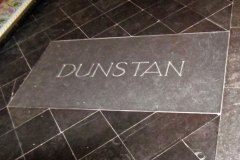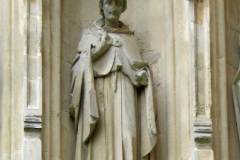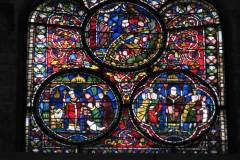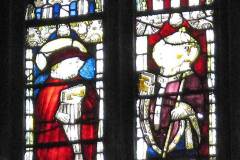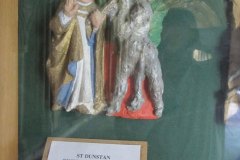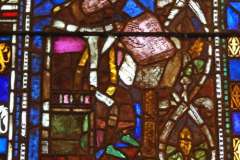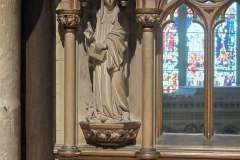(910-988) Archbishop, Craftsman, Statesman
Dunstan was born around 910 in Somerset, and as a boy studied under Irish monks at Glastonbury. He showed early promise in terms of both scholarship and handicrafts, and at a young age became a priest. Over a long career – he died in Canterbury in 988 in his late 70s – Dunstan served as a minister to several kings, excelled as a silversmith, artist, musician, singer and teacher, served as abbot of Glastonbury where he established the discipline of Benedictine monasticism, and rose within the catholic church as Bishop of Worcester, Bishop of London and, after a brief period in exile in Ghent, as Archbishop of Canterbury (959-988). Widely admired for his learning, generosity and justice, Dunstan was soon canonised, and quickly established an unrivalled position as England’s favourite saint. He was buried in Canterbury cathedral but, following the fire of 1074 his remains were removed to the north side of the high altar. A legend of Dunstan fending off the devil by catching him by the nose with hot tongs achieved great popularity. Dunstan is recognised as patron saint of blacksmiths, goldsmiths, silversmiths and musicians. For details of St Dunstan’s church just outside Canterbury city, click here.
What to see:
- a stone by the high altar marking Dunstan’s burial place (Image 1)
- Dunstan’s statue on the east face of the external wall of the south west porch – this is one of over 60 statues by Theodore Phyffers (Image 2)
- his image in stained glass in the north triforium of the choir (Image 3) – this shows Dunstan escaping from Glastonbury with the help of angels when the devil locked him in
- his image in stained glass above the martyrdom – this shows him with cross and book, wearing full pontificals and tasselled gloves (Image 4)
- a small statue behind glass in the cloister – formerly a roof boss (Image 5)
- stained glass in Gabriel chapel (Image 6)
- small statue near Dunstan’s burial stone (Image 7)
Sources: see standard cathedral sources; also Knowles (1962); Green (1995)
DL

